Pat Collins first showed ‘moving pictures’ at the Bloxwich Wakes Fair, in 1900, as part of his spectacular fun fairs. Collins set up what became the Showman’s Guild and was its longest-serving president. He was also a local councillor, as well as MP and mayor for nearby Walsall. The well-known ‘Bloxwich Showman’ died in 1943 and was buried in Bloxwich Cemetery. The ‘Pat Collins Memorial Clock’ was later erected in Promenade Gardens.
A photograph and text about The Bloxwich Showman.
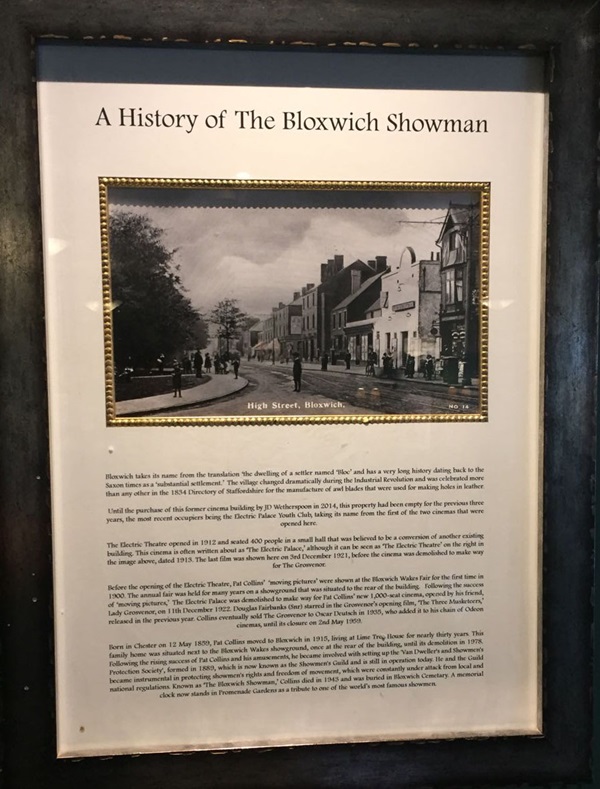
The text reads: Bloxwich takes its name from the translation ‘the dwelling of a settler named Bloc’ and has a very long history dating back to the Saxon times as a substantial settlement. The village changed dramatically during the Industrial Revolution and was celebrated more than any other in the 1834 Directory of Staffordshire for the manufacture of awl blades that were used for making holes in leather.
Until the purchase of this former cinema building by J D Wetherspoon in 2014, this property had been empty for the previous three years, the most recent occupiers being the Electric Palace Youth Club, taking its name from the first of the two cinemas that were opened here.
The Electric Theatre opened in 1912 and seated 400 people in a small hall that was believed to be a conversion of another existing building. This cinema is often written about as The Electric Palace, although it can be seen as The Electric Theatre on the right in the image above, dated 1913. The last film was shown here on 3 December 1921, before the cinema was demolished to make way for The Grosvenor.
Before the opening of The Electric Theatre, Pat Collins’ moving pictures were shown at the Bloxwich Wakes Fair for the first time in 1900. The annual fair was held for many years on a showground that was situated to the rear of the building. Following the success of moving pictures, The Electric Palace was demolished to make way for Pat Collins’ new 1,000 seat cinema, opened by his friend, Lady Grosvenor, on 11 December 1922. Douglas Fairbanks (snr) starred in The Grosvenor’s opening film, The Three Musketeers, released in the previous year. Collins eventually sold The Grosvenor to Oscar Deutsch in 1935, who added it to his chain of Odeon cinemas, until its closure on 2 May 1959.
Born in Chester on 12 May 1859, Pat Collins moved to Bloxwich in 1915, living at Lime Tree House for nearly thirty years. This family home was situated next to the Bloxwich Wakes showground, once at the rear of the building, until its demolition in 1978. Following the rising success of Pat Collins and his amusements, he became involved with setting up the Van Dweller’s and Showmen’s Protection Society, formed in 1889, which is now known as the Showmen’s Guild and is still in operation today. He and the Guild became instrumental in protecting showmen’s rights and freedom of movement, which were constantly under attack from local and national regulations. Known as The Bloxwich Showman, Collins died in 1943 and was buried in Bloxwich Cemetery. A memorial clock now stands in Promenade Gardens as a tribute to one of the world’s most famous showmen.
A drawing of the Grosvenor Cinema, c1921, showing the front elevation.
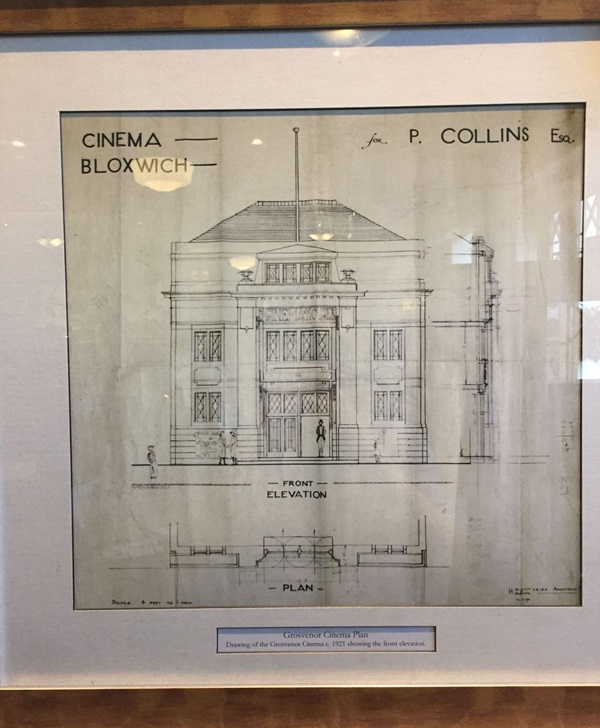
A photograph of the Grosvenor Cinema.

Pat Collins, pictured on the left, photographed in 1924 with the manager of the Grosvenor, standing outside the front of this former cinema building.
Art on the wall, inspired by Pat Collins’ funfairs.
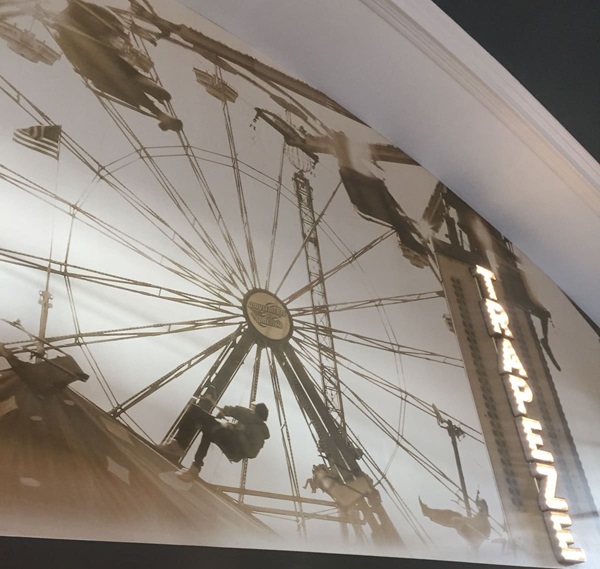
An acrylic painting entitled Promenade Gardens, by Nick Logan.
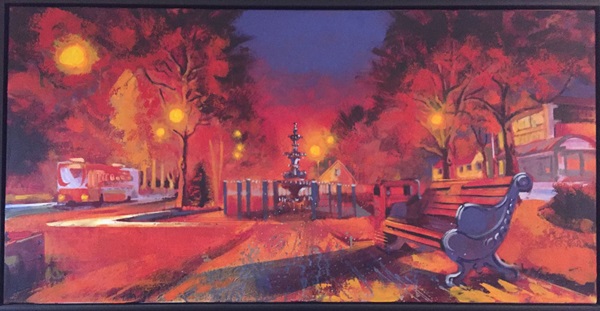
External photograph of the building – main entrance.
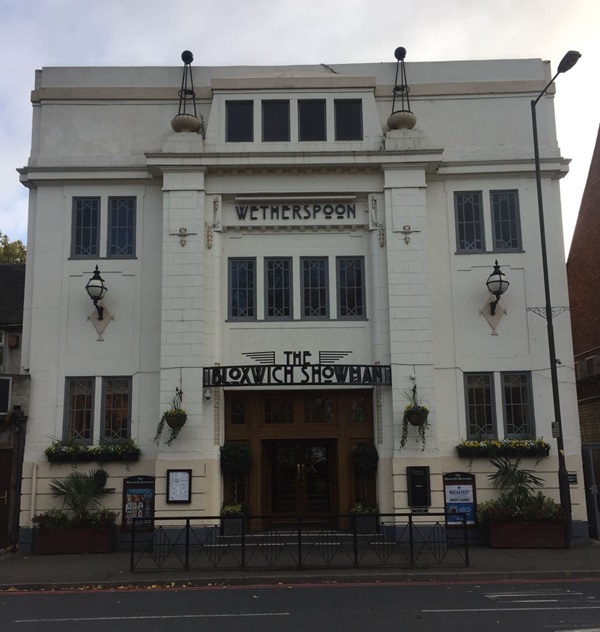
If you have information on the history of this pub, then we’d like you to share it with us. Please e-mail all information to: pubhistories@jdwetherspoon.co.uk